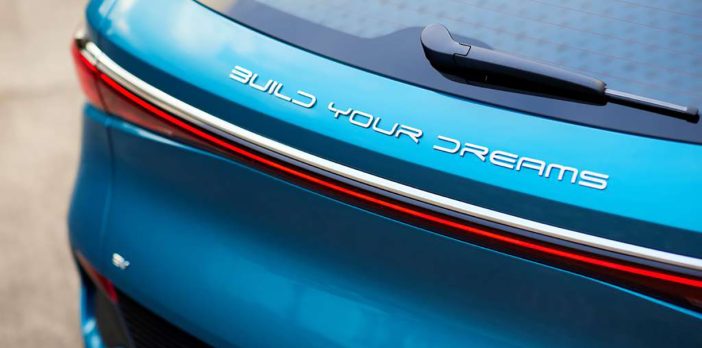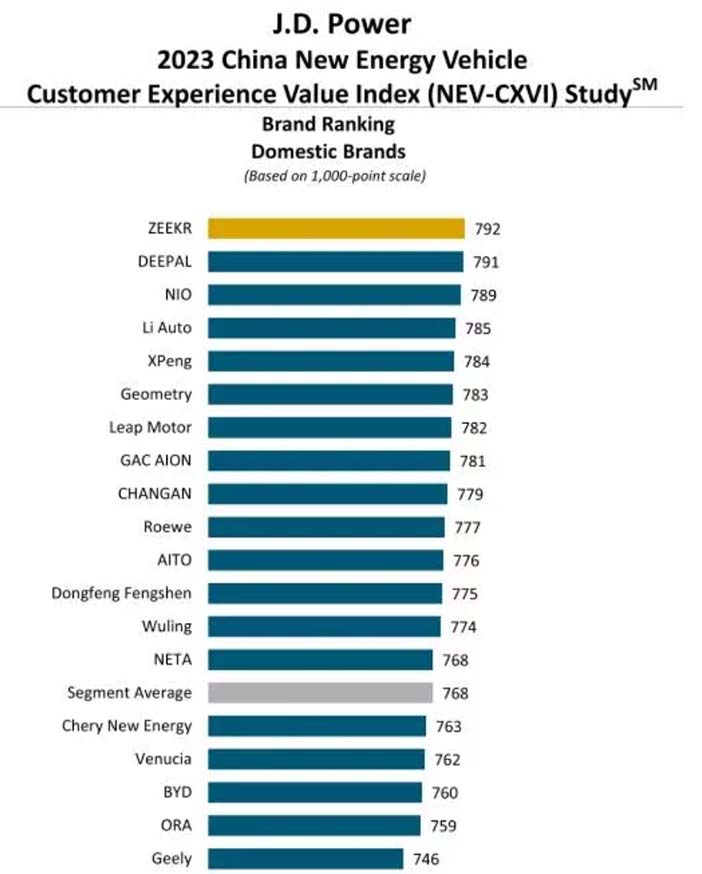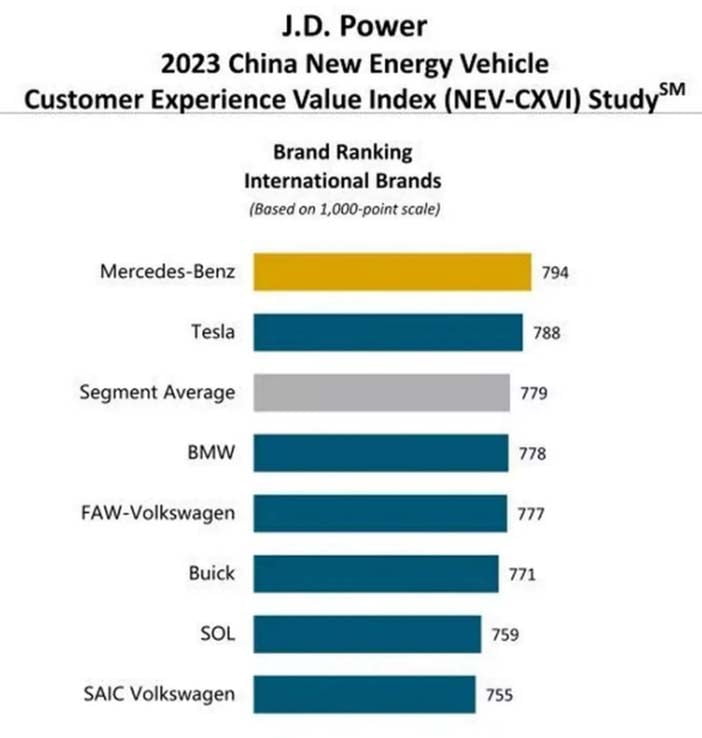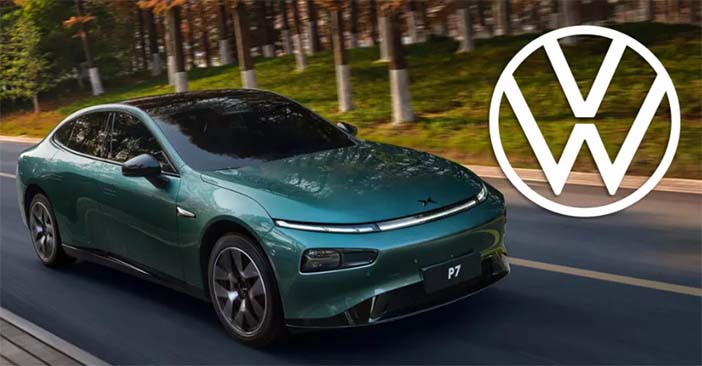+++ BENTLEY recently supported the Manchester Pride event with a uniquely wrapped Bentley Continental GTC. Designed by Rich Morris, the brightly-coloured convertible is part of the Bentley’s Heritage Collection and was created to reaffirm the automaker’s support for the LGBTQ+ community. Featuring a rainbow stripe pattern, the Bentley Continental GTC made a striking addition to the parade, which is held to showcase solidarity and advocacy for LGBTQ+ rights. Manchester Pride is one of the UK’s largest Pride events to promote a world where all people are free to live and love without prejudice. The parade celebrates the progress made while continuing to raise awareness, bringing hope, and inspiring others to challenge discrimination. Rick Morris, a CGI artist and designer at Bentley, focused on the classic Pride colours to create a statement that was simple but bold and direct. He wanted people who see the Continental GTC to understand what the car stands for, regardless of their knowledge of the LGBTQ+ community. Using the lines and shape of the GTC, Morris designed the artwork in which multiple lines intersect to create a diamond pattern representing Bentley’s interior quilt patterns. In addition to the Continental GTC, 75 Bentley associates, including partners and allies, attended Manchester Pride. This turnout helped reinforce the message that the automaker is striving to create a culture where all employees feel comfortable bringing their true, authentic selves to the workplace. According to Karen Lange, a member of the Board for Human Resources at Bentley Motors, the colorfully wrapped Continental GTC reflects the company’s diversity at its headquarters and around the world. “Inclusion remains a year-round commitment for Bentley”, she said. Bentley’s Crewe headquarters is approximately 35 miles from Manchester and employs 4,000 people. In addition to its support for LGBTQ+ rights, the automaker has implemented changes for environmental sustainability, including making its factory carbon-neutral and establishing bee colonies on the company’s grounds. Additionally, the company plans to begin producing electric vehicles, which in some cases will double the power of the current W12 models. +++

+++ BYD is to react to early customer feedback from Europe and drop the controversial ‘Build Your Dreams’ slogan from across the rear of many of its models. The Chinese manufacturer is said to have made the decision after customers in several of its latest markets objected to the lengthy badging across the rear of the vehicles. Some parties have suggested that the aspirational message highlights BYD’s Chinese origins. Tim Bryant, BYD’s European Customer Experience Manager, revealed that the badging on the soon-to-be-introduced Seal will be simpler and cleaner, as a direct result of customer feedback. “I’m pleased to say that we’ve listened to customer feedback and thanks to our rapid supply chains, Seal models for Europe will have discrete badging”, he said. Autointernationaal.nl understands that ‘Build your dreams’ has also now been dropped from the tailgates of Atto 3 cars currently being produced and that these examples will filter through to European stock in due course. ‘Build your dreams’ will remain on BYD’s entry model, the Dolphin, for the foreseeable future, though. In that vehicle’s case, the slogan is stamped into the tailgate pressing, instead of being affixed badges, so removing it would be too costly. +++

+++ If asked to name a driver-oriented HONDA you couldn’t be faulted for jumping to the usual suspects. The Integra, the Civic Si, the Accord Type R and, of course, the S2000 and NSX. Those are all great nameplates and exceptional cars, but there’s one coupe that is commonly left off the list of iconic Hondas: the Prelude. But a trademark filing by Honda on August 15 could hint at the return of the name that was once revered for its innovation. Honda initially made a trademark application a couple of years ago for the Prelude name to be used for merchandise. However, the latest development prevents competitors from using the badge on an actual vehicle, which could suggest(if interpreted with a great deal of optimism) that Honda is looking at assigning the moniker to an all-new creation. The Prelude first appeared in 1978 and lasted 5 generations. Its second generation debuted an aerodynamic (during daylight at least) design with a lower front clip and popup headlights. 1987 saw the Prelude adopt four-wheel steering, allowing for improved maneuverability; a feature that is only just becoming mainstream on higher-end cars. We’re going to do our best to temper expectations: it’s entirely possible that the Japanese automaker is considering putting the Prelude name on a crossover or SUV. Of course, there’s the other rumor that has been floating around that the company is planning to do something special for its 75th anniversary. The company famously unveiled the S2000 for its 50th anniversary. And Honda did tease 2 electric sports cars last year when they announced plans to launch 30 EVs globally by 2030. Plus, with the Integra name making a comeback for Acura, there is precedent to back up the theory. If the Prelude were to return as an EV sports car it would almost certainly be based on the e:N architecture and feature a rear-mounted electric motor. Honda has also hinted that they have no qualms in giving the world an electric Type R, opening the doors of possibility to something that could even rival the next generation of Boxster/Cayman. +++
+++ JAGUAR is preparing to launch a large, lavish electric saloon to serve as an indirect replacement for the axed electric XJ. It was previously understood that Jaguar’s new 4-seat grand tourer, launching in 2025, would be followed into dealerships by a pair of luxury crossovers. But now a source familiar with the new models has told that while 1 of the other 2 cars is indeed a Bentley Bentayga-sized flagship SUV, the other is actually an imposing limousine conceived in the mould of the XJ, albeit heavily redesigned, substantially larger and much more luxurious. All 3 cars will sit on the long-wheelbase JEA electric vehicle platform being developed exclusively for use by new-era Jaguar models. JLR boss Adrian Mardell said the Jaguar brand needed its own architecture: “Otherwise, it doesn’t quite look as potent and exuberant as you would wish it to. This wheelbase and this architecture will deliver the design intent”. Priced from between €125.000 and €150.000 in the Netherlands, the 3 cars will come equipped with 4-wheel drive, 4-wheel steering and ultra-fast charging capacity that will allow for a 10-80% top-up time of just 13 minutes. Early details suggest each will produce no less than 450 hp, sprint from 0-100 ph in between 3.0 and 3.8 seconds, top out at 250 kph and offer ranges of at least 600 km and up to 750 km. Before ex-JLR CEO Thierry Bolloré’s Reimagine plan was introduced, Jaguar had been developing an electric XJ that was based on the Range Rover’s MLA platform and originally due for launch by 2022. But the project was scrapped when the car was deemed incompatible with the wider plan for Jaguar. That car has never been revealed, and Jaguar had given no indication of its performance potential before the program was halted in 2021. It’s likely, however, that its replacement’s impressive figures are only possible because of significant advancements in battery, motor and charging hardware in the intervening years. Not only will they make the new electric saloon immediately one of the most advanced cars in its segment when it is launched, but they should also ensure that the model remains at the cutting edge until the next step-change in the development of electric drivetrain technology. Autocar’s source said the saloon and its range-mates are unrelated to every car Jaguar has launched so far and bear little resemblance to the artists’ impressions that have been circulating since the brand’s reinvention plans were first made public. Perhaps most surprising of the details obtained by Autocar is that the new models no longer bear the leaping cat emblem that has adorned most of the Coventry-based firm’s cars since the end of the Second World War. Instead, the Jaguar name will be spelled out across the front and rear in a new font, which is emblematic of the granular approach that bosses are taking with the brand’s reinvention program. Chief creative officer Gerry McGovern’s pledge that the cars will be “a copy of nothing” (itself based on a quote by Jaguar founder Sir William Lyons) is clearly being followed to the letter. Mardell recently told that all current Jaguar models will have to come off sale by 2025 because they will look nothing like their replacements. “When we launch our new JEA platform, the change from today on Jaguar is very dramatic”, he said. “We don’t want older-looking cars and newer-looking cars”, To that end, the silhouette of each new Jaguar will be a radical departure from that of even its most closely related predecessor. For example, while the large electric limousine at the heart of the proposed 3-strong model range is best thought of as a spiritual successor to the XJ, it won’t ape the swooping 3-box shape shared by each of that car’s 5 generations. Instead, sources indicate that it will adopt a radically minimalist new look with no obvious inspiration from any model past or present. Described as comparable in size to the Bentley Mulsanne (which was 5.575 mm long) the new saloon will have a low-slung silhouette defined by sharp surfacing and generous proportions. The flat front end will host ultra-slim LED headlights arranged in a distinctive new pattern around a non-functional grille-style structure that will come to be known as the new face of Jaguar. It will be joined at a near-90 degree angle to an expansive, probing bonnet that’s said to be longer than that of any previous Jaguar. Other defining features of both the saloon and its GT and SUV stablemates include a ‘floating’ roof effect achieved by black A- and B-pillars, striking 22 inch alloy wheel designs and a range of overtly luxurious paint options including brushed gold and silver. The tail-lights, meanwhile, are said to be integrated into ultra-thin slits that run across the wide-arched rear end and will be ‘invisible’ when the cars are turned off, as is the case with the latest Range Rover. None of the 3 cars will feature a rear window, in a move mirroring that of Swedish EV maker Polestar. Rear visibility will instead be provided by a digital ‘mirror’ screen at the base of the windscreen, while smaller screens at the base of the A-pillars will replace conventional side mirrors. The minimalist design theme carries over to the interiors of the new cars, which major on advanced technology, spaciousness and upmarket materials (including vegan-friendly upholstery options), although individual differences for each model remain to be seen. At this stage, it’s understood that the saloon only has buttons on the steering wheel, with a slick wraparound digital display behind the steering wheel serving as the main infotainment interface. A smaller touchscreen on the centre console, meanwhile, handles key functions such as the climate control and audio. The centre console will either extend through the length of the cabin to divide the rear seat into 2 separate areas or be of a shortened design to give a more conventional 5-seat layout. In keeping with Jaguar’s shift upmarket, rear-seat passengers will get USB-C charging ports, individual infotainment screens on the back of the front seats and blinds for the rear windows and reclining seats, as well as generous amounts of leg, head and elbow room, aided by the car’s substantial footprint. It’s not yet known whether the related GT model, which is described as a sporting version of the saloon, will trade some of that capaciousness and luxury appeal in pursuit of a tighter, sleeker silhouette and a more obvious focus on performance, but the SUV at the top of the line-up will no doubt offer space and opulence on a par with those of its Bentley rival. JLR’s goal is for the revived Jaguar brand to sell 4.000 cars a month globally. To achieve that, based on the much higher pricing structures it will introduce, its cars must be designed to appeal to buyers in emerging luxury car markets. Mardell explained: “North America, UK, the mainland of Europe: these are regions where Jaguar has sold well in the past, and they will sell well there again, and we have China, which we’ve never broken through, and Jaguar never relied on, but which we’re now starting to understand. We’ve got people in China researching and sharing their views on those vehicles, so they can actually tell us whether they think those vehicles can be successful within China, and we’re delighted with their response”. Jaguar’s 4-door GT will be shown late next year before going on sale in 2025. The firm hasn’t hinted at arrival dates for its range-mates, but it will launch no more than 1 car per year after the first. +++
+++ LONDON mayor Sadiq Khan has shelved plans to introduce a zero emission zone (ZEZ) in the city centre, following yesterday’s expansion of the Ultra Low Emission Zone (ULEZ). The ZEZ would have operated similarly to the ULEZ, charging motorists a daily toll for driving a pure-petrol or pure-diesel car into the zone. Khan’s transport strategy, originally published in 2018, read: “A zero emission zone is likely to require vehicles that drive within it (that are not capable of operating with zero exhaust emissions) to pay road user charges (similar to those in ULEZ or LEZ)”. This leaves the door open to parallel hybrids and plug-in hybrids capable of running in electric-only mode (albeit for varying distances). Toyota claims its systems are zero-emission for 80% of the time and 50% of the distance, although this has been disputed by Brussels-based pressure group Transport & Environment. “Trying to pretend that standard hybrids have significant zero-emission capability is just silly”, said Ralph Palmer, electric vehicles officer at T&E. As for PHEVs, many new models now offer a real-world electric range north of 25 km. Khan’s strategy noted: “It will also be necessary to use disincentives to phase out fossil fuels altogether”. Although plans for a ZEZ have been shelved in City Hall, London boroughs are still able to introduce such measures at a local level. A spokesperson for Khan told the Financial Times that “Transport for London continues to support boroughs who wish to implement zero-emission zones”. A ZEZ was trialed along Beech Street (next to the Barbican Centre) as from March 2020 to September 2021. In response to a question regarding the pilot, Khan said in January that more data had been collected following the “traffic experiment” and that the City of London Corporation was due to consult on a permanent scheme in the spring. It decided in July not to renew the Beech Street ZEZ, noting in its report that support for it was divided: 51% of survey respondents were for the zone’s renewal, while 49% were against it. Of those who opposed its renewal, 49% believed that it didn’t do enough to reduce traffic and 41% felt it didn’t sufficiently improve air quality. +++
+++ After years being pushed into the shadows by SUVs, the MPV appears to be making a comeback. Volvo confirmed a few days ago that it will reveal its new electric EM90 in November, Lexus dropped its LM earlier this year and of course we’ve all been going a little nuts over VW’s ID.Buzz for a while now. And to us, this MPV comeback makes perfect sense. It’s not like MPVs disappeared altogether; segment stalwarts like the Honda Odyssey and Toyota Sienna have stuck it out for over 25 years in the U.S., though MPVs have become less common both there, and in Europe, where they were once massively popular. But what’s new about this latest crop of minivans, from affordable entries like the new Ford Tourneo Courier to more expensive luxury options such as the LM and EM90, is that they’re being marketed as aspirational vehicles. Basically, MPVs appear to be cool again in a way they haven’t been for at least 20 years, and probably more like 40. I’m convinced that this trend will only continue in the coming years as autonomous technology becomes more sophisticated. Over the past 2 decades the marketing message from almost every automaker has been how ‘sporty’ their vehicles are, a stance that was of little real benefit to most non-enthusiast drivers. It’s made our cars ride worse and feel more claustrophobic than they could be thanks to shallow glasshouses, coupe-like rooflines (even on SUVs!), firm suspension and big wheels: fine on a genuine driver’s car, maybe, but hardly ideal in supposedly practical family vehicles. But that will certainly change when new tech allows us to start delegating more driving duties to the car on boring multi-hour freeway drives and we begin looking at road travel in a different light. Volvo hinted at this new relationship between car and ‘driver’ with the EM90 teaser campaign, asking us to “imagine a moving space where you can just be you. A place where you can connect with your loved ones, create, relax, work or just think”. It describes the interior of the EM90 as like a “Scandinavian living room on the move” and put together a video clip where a real Scandi lounge morphed into the EM’s cabin to show us what it meant. With their flat floors, flexible seating and tall windows that flooded the cabins with light, modern MPV pioneers like the 1980s’ Plymouth Voyager and Renault Espace showed us just how compromised the packaging on regular cars was, and how much better minivans suited families and people with active lifestyles. Somewhere along the line we lost sight of that. Though some SUVs are genuinely practical, most are far less space efficient and flexible than an MPV of a similar size. But we buy them because they look more macho or we think they make us look less like a soccer mom. Maybe we’re in the process of remembering how great minivans can be as we come to reconsider how we’ll be using vehicles in the next 10-20 years. The question is, will Renault, the company that pushed the MPV message for decades, remember? The automaker’s latest Espace is just another me-too SUV and a pale shadow of the innovative 1980s original. +++
+++ The number of NEW ENERGY VEHICLES (NEVs) in China keeps rising but customer experience satisfaction ratings dropped in 2023 showing that automakers have a lot of work to do. The Chinese arm of J.D. Power published this year’s findings, with Zeekr topping the local automakers’ chart and Mercedes-Benz sitting at the top of international companies ahead of Tesla. The study evaluates the experience of NEV buyers between 2 and 12 months of ownership. The experience is divided into 3 stages: purchase, usage and after-sales service, which are subdivided into smaller categories. This year, the study was based on the answers of 5.059 owners from 81 major cities across China who bought NEVs from 49 different brands. The average rating for the overall customer experience satisfaction is 770 out of 1.000, representing a 26-point drop compared to last year. This decline is attributed to the fact that buyers have greater expectations from the vehicles.

Among the domestic brands, Geely’s Zeekr (792 points) had the highest rating, closely followed by Deepal (791) and Nio (789). On the other hand, the top 3 highest rated international automakers were Mercedes-Benz (794 points), Tesla (788 points) and BMW (778 points). The fewer international brands scored better than their domestic rivals with an average of 779 points (-27) compared to 768 points (-23) although both were lower on a year-to-year basis. Customer satisfaction is crucial for brands as an increased rating leads to more referrals, thus increased sales according to J.D. Power China. The firm also suggests that a direct sales model has a positive effect on user experience in both the purchase and usage stages. Regarding after-sales service, mixed-sale brands tend to perform better, with first-time buyers registering notably higher satisfaction ratings compared to repeat or additional purchasers. +++

+++ RENAULT hopes to list its Ampere electric vehicle business next year as it pushes forward with an ongoing transformation and transition to EVs. While recently speaking about the firm’s plans, Renault chief executive Luca de Meo said he wants Ampere to go public sometime during Europe’s spring next year, meaning between March and May. In the meantime, Ampere is expected to be formally separated from the rest of Renault by November 1 this year. “So we separate and then we see if we have the right conditions to enter the market”, de Meo confirmed. The French car manufacturer had initially planned to spin off its Ampere EV unit before the end of this year and was aiming for a market capitalization of around €10 billion. The unit won’t just be charged with the firm’s future EVs but will also develop a new electrical architecture that operates with 20 processors, rather than the 100 that Renault currently uses. This new electrical architecture will also allow for over-the-air software updates and help the carmaker avoid €1.5 billion in research and development expenses over a decade. News of Ampere’s impending separation from Renault comes shortly after the French brand revised its alliance with Nissan. The new agreement will see Renault and Nissan both hold a 15% stake in each other while Nissan will become a strategic investor in Ampere. The company is expected to invest up to €600 million in Ampere and will also secure a board seat. While Ampere is still in its infancy, Renault believes that it could reach profitability as soon as 2025. We also know that it is targeting a 30% compound annual growth rate until 2030 and also forecasts a 40% cost reduction on a car-by-car basis when it introduces its next generation of EVs. +++
+++ Last month, VOLKSWAGEN announced a significant deal designed to expand the company’s presence and portfolio in the Chinese mobility market. Subject to approval, it seeks to purchase a five percent stake in tech-driven automaker Xpeng, with a planned investment of $700 million. The move is regarded as a savvy one for the German automaker. Not only does it increase its footing in one of the fastest-growing markets for new-energy vehicles, but with an agreement to expand cooperation, it means VW can also tap into the technology on offer from the young Chinese startup. Xpeng may be a smaller player in the Chinese automotive space than some of its rivals, but its technology has been at the forefront of the company’s portfolio since day one. On the other hand, while China is the largest market for Volkswagen’s internal combustion-powered cars, the company has got off to a slow start with EVs. It currently holds just a 2.6 percent market share in the Chinese NEV sales charts. Meanwhile, Tesla is the second most popular EV maker in China, with a 10 percent market share. VW’s success with its ICE offerings means the brand has a strong presence in China. However, their lack of market-oriented offerings in the EV space has put them behind a host of home players, including BYD, GAC, Wuling, Geely, Li Auto and Chang’an. But a tie-up with Xpeng may be what the doctor ordered for VW. Reuters cites research showing that Chinese consumers are picking cars based on gadgets such as smart cockpits and infotainment systems. In-car tech is a segment that Xpeng has invested heavily in. For example, the P7i is available with what the company describes as the “industry’s most advanced all-scenario driver assistance system”. It features 31 sensors, including 2 lidar units, five millimeter-wave radars and 12 ultrasonic sensors to offer semi-autonomous driving in cities and on highways. Meanwhile, Tesla’s Full Self-Driving isn’t yet available for Chinese consumers. VW plans to launch two “fully connected” midsized EVs by 2026 which will be jointly developed by Xpeng, using the company’s existing platforms and tech. By piggybacking off the homegrown startup to create new vehicles for China, VW has managed to cut its model development time roughly in half. And while it may be humbling for a company as large as VW to rely on such partnerships, it could be a sign of things to come. Even though Volkswagen has less than a 3 percent share in the Chinese NEV market, it’s the only foreign brand besides Tesla to feature in the top 10. The likes of Toyota, Honda, General Motors and Nissan, who all feature in the top 10 for sales of Chinese combustion-engine vehicles, are lagging behind when it comes to EVs. Additionally, passenger car sales in China peaked in 2017. Production far outstrips demand, with an estimated capacity of 40 million cars, almost double the 23.6 million units sold last year. There was a time when foreign automakers were forced by Chinese regulations to partner with domestic car makers. In those cases, the homegrown entities learned production from the legacy foreign automakers. In a turning of the tables, it may be that those same foreign automakers need to look at consolidating and collaborating with Chinese startups to stay relevant in the EV race. +++



